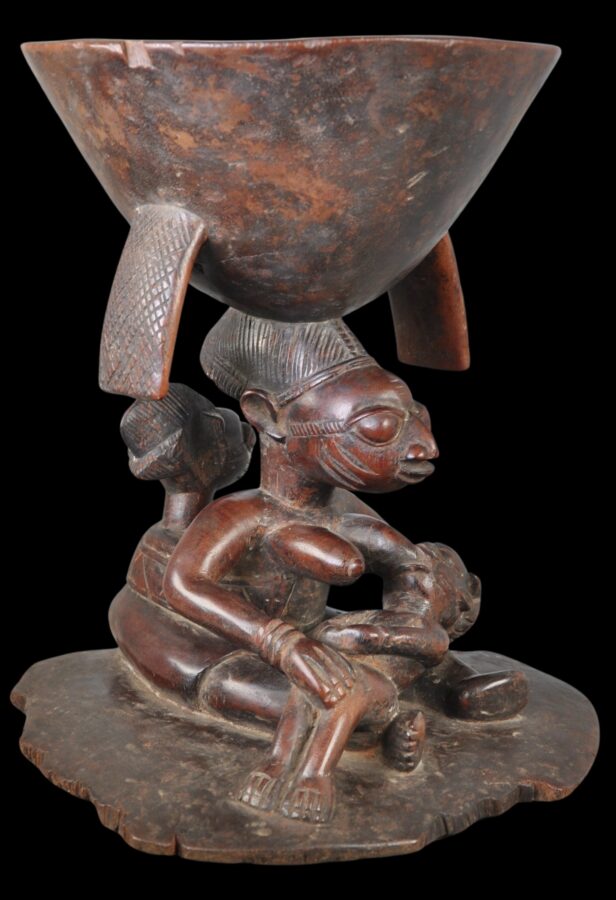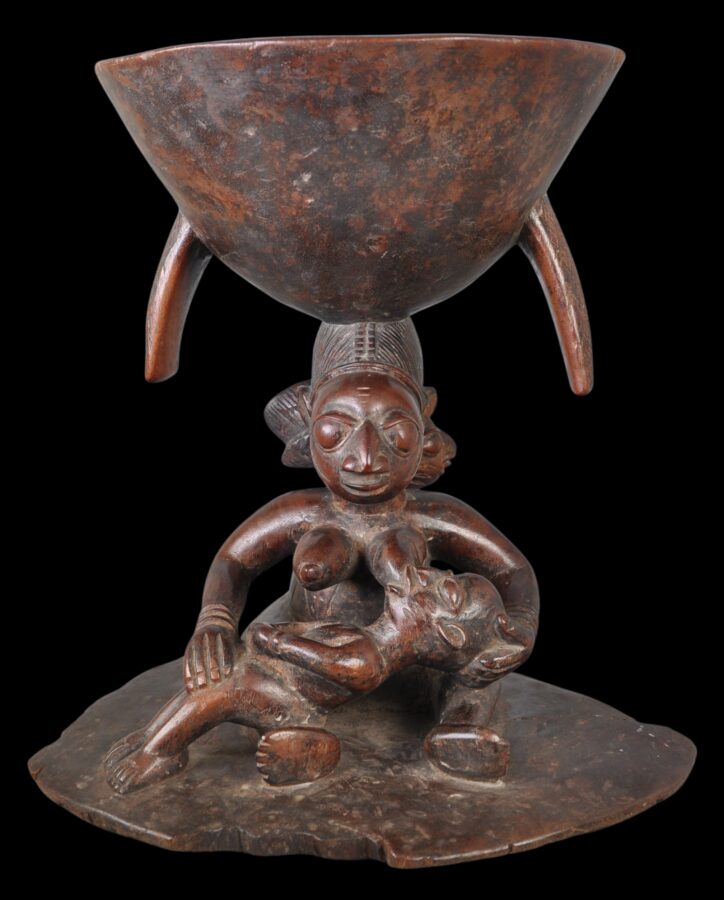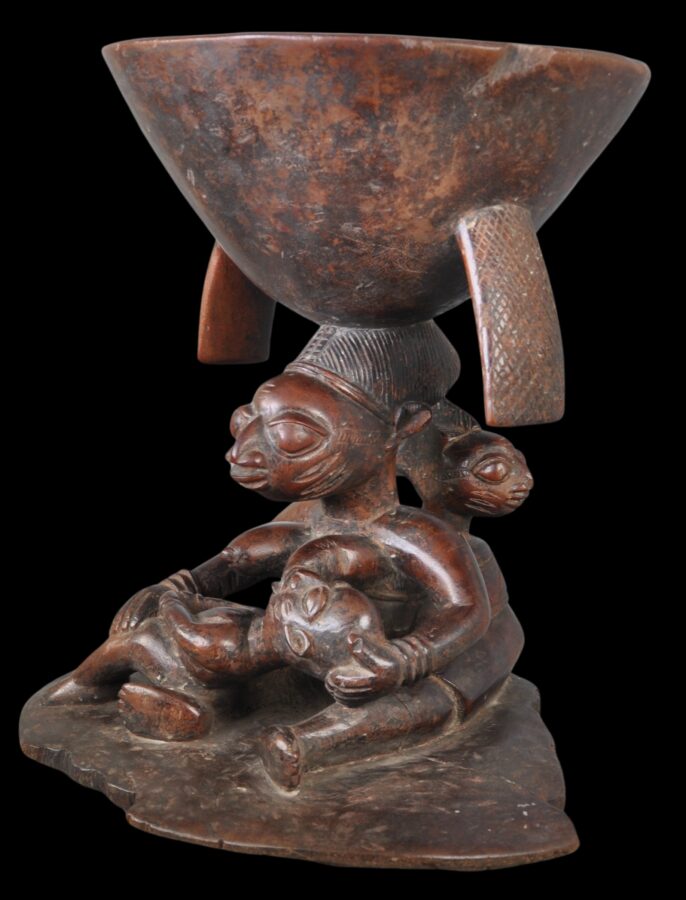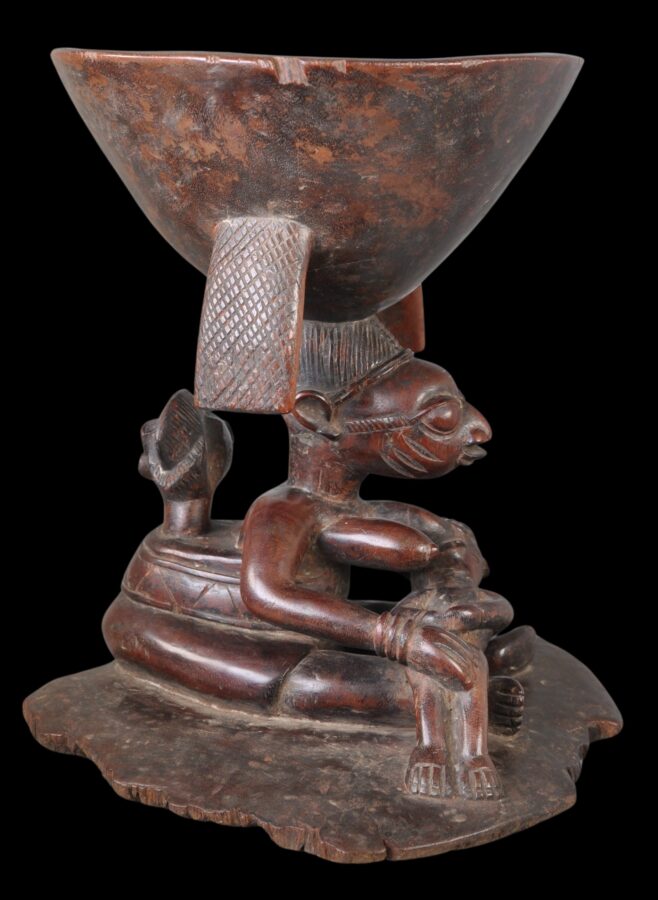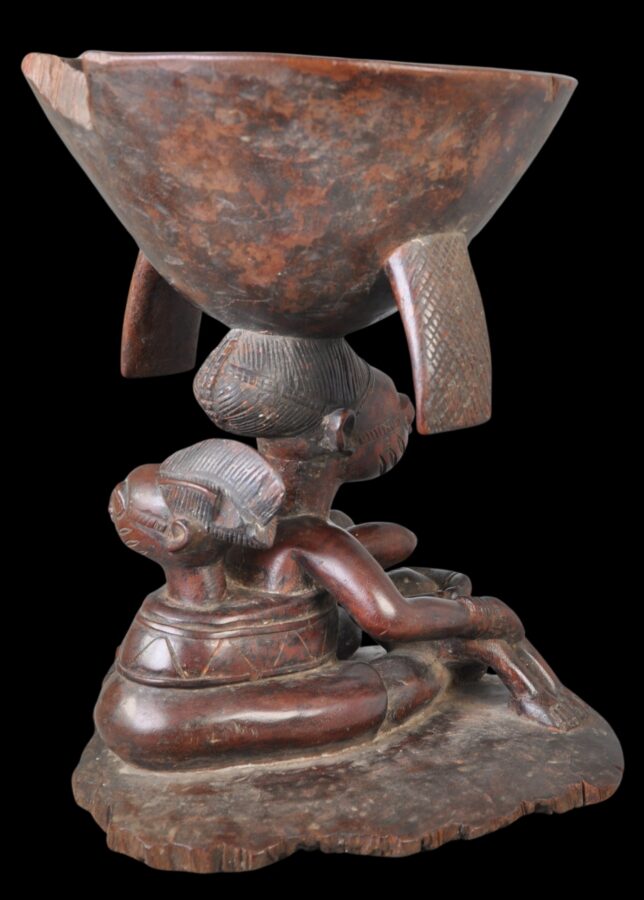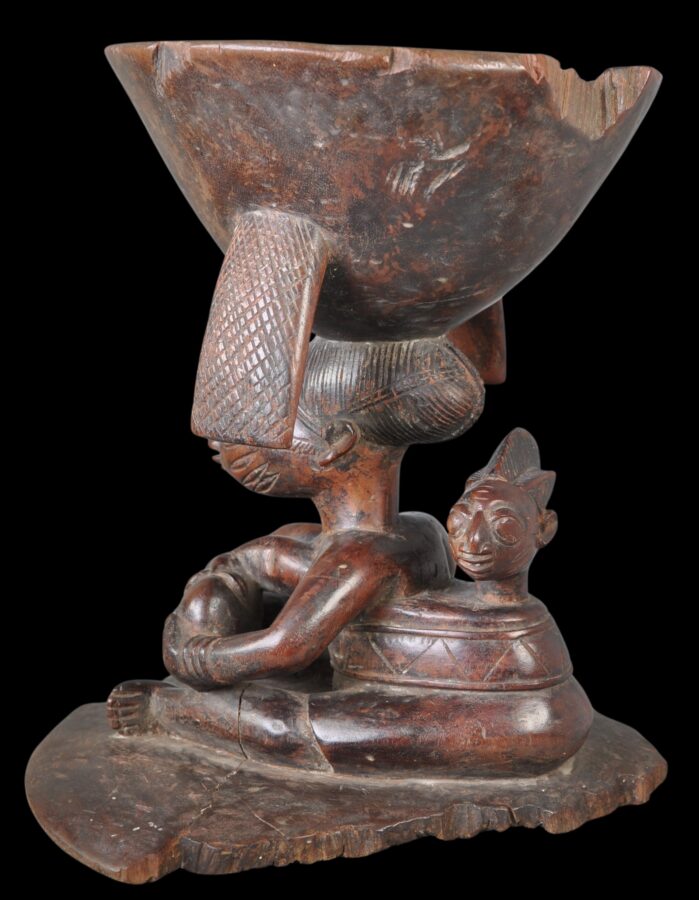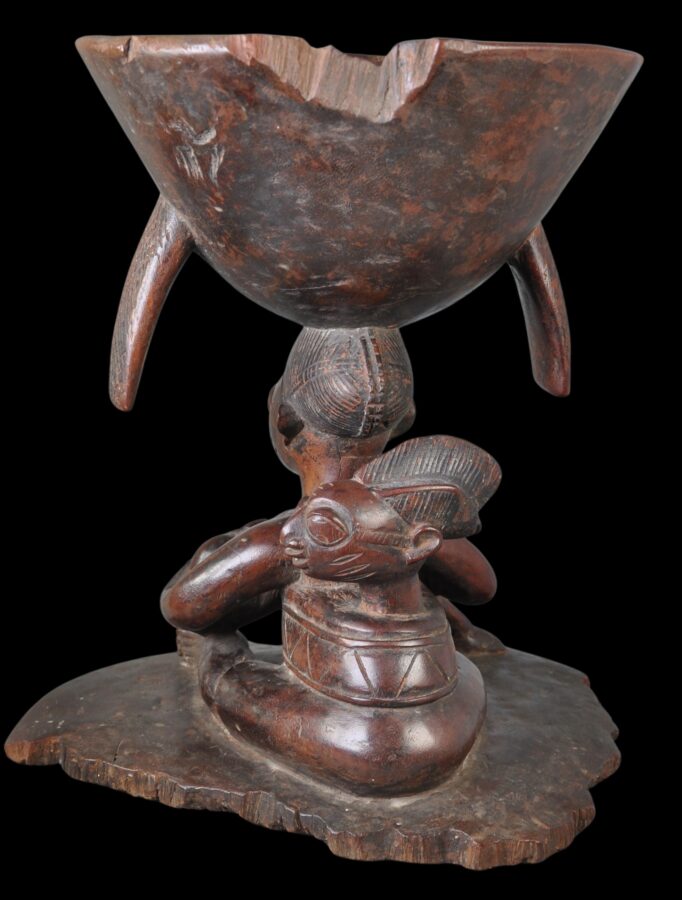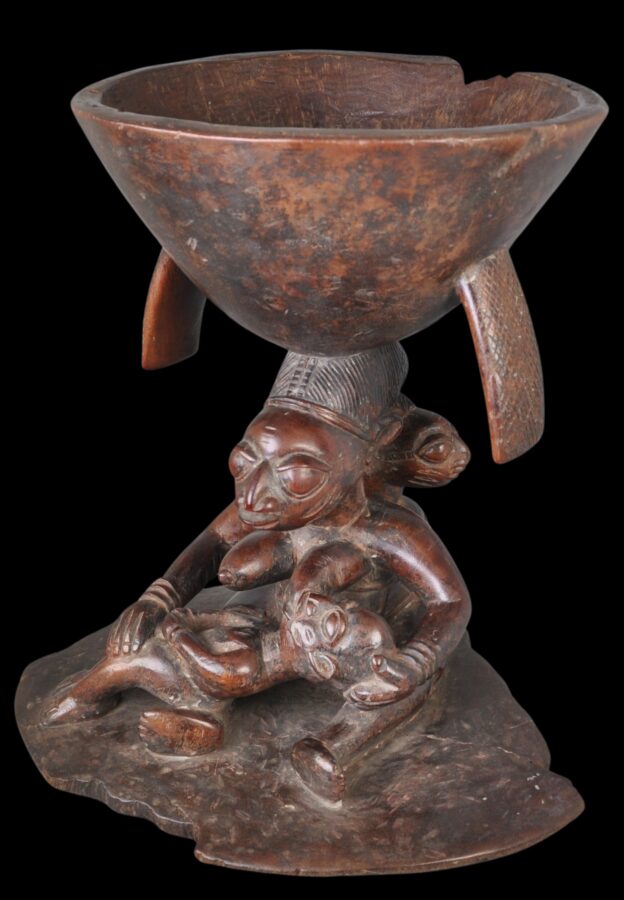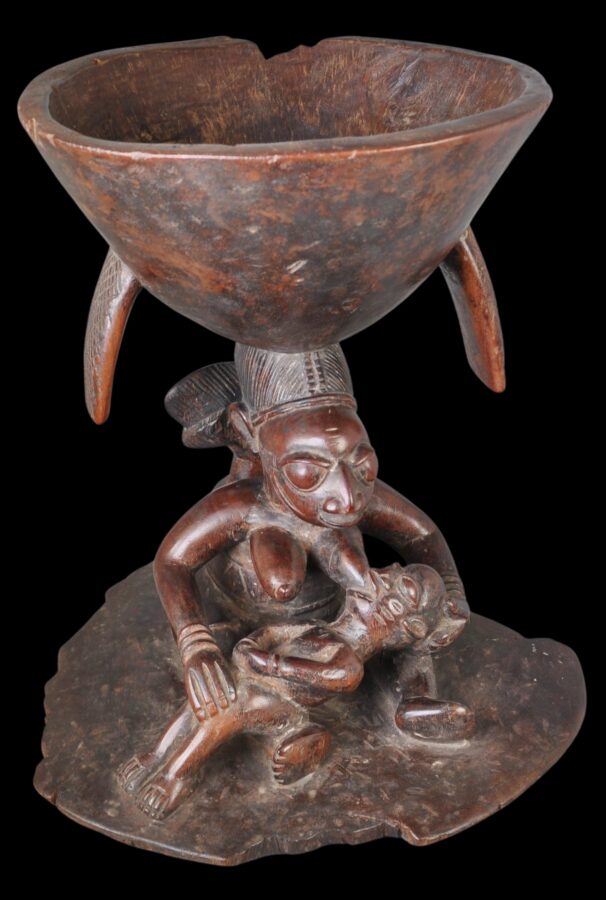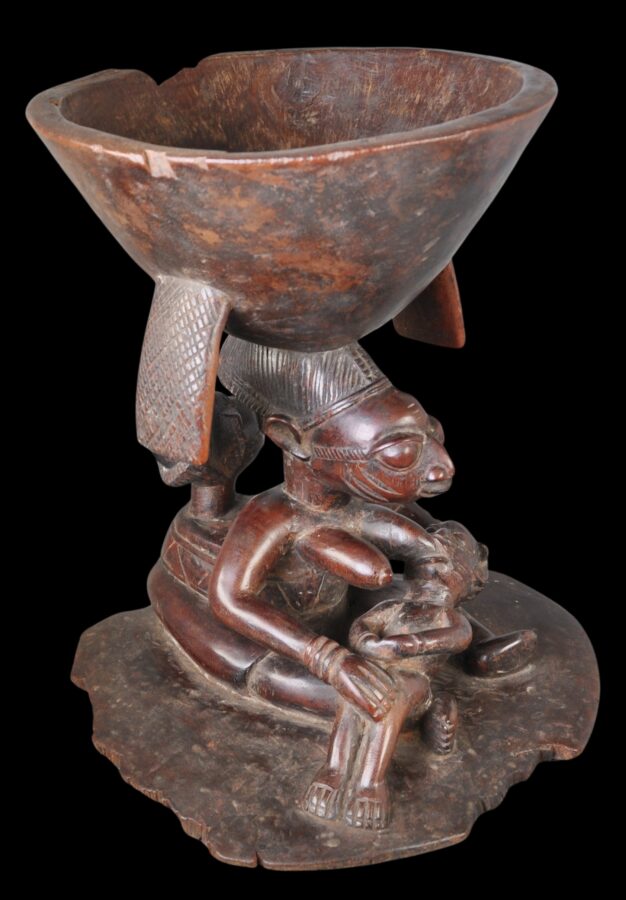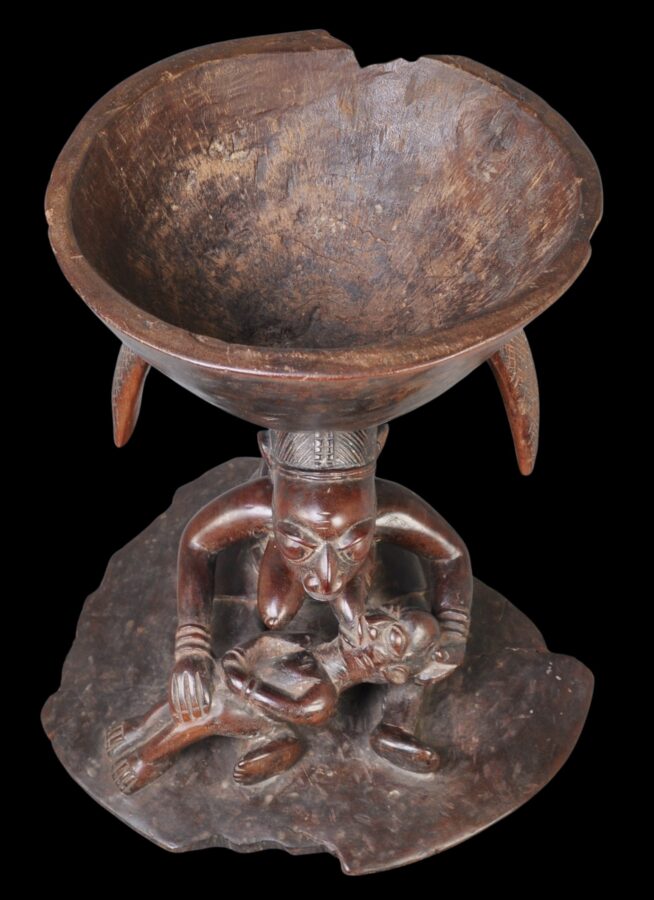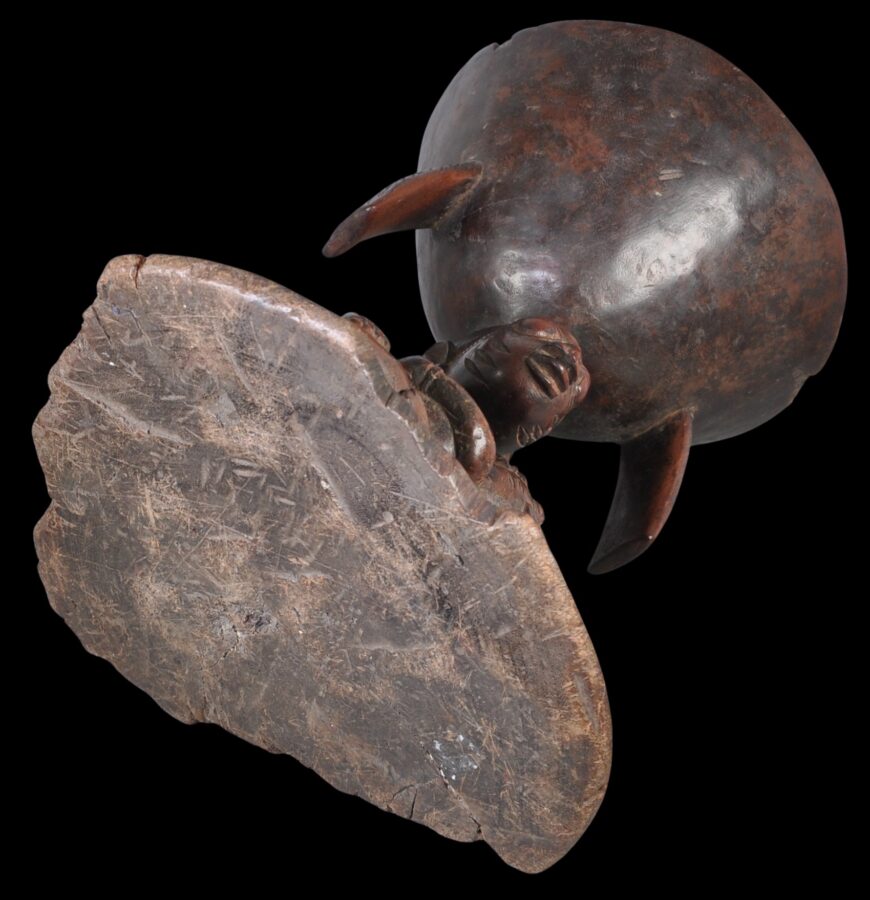This carved, wooden Yoruba divination bowl is notable for its sculptural quality, glossy patina, and obvious use and wear.
The bowl is unusually deep. It has two handles emerging from the underside to allow the bowl to be more easily shifted without upsetting the content. The outsides of the handles are cross-hatched.
The carver of this bowl has chosen the theme, so commonly encountered in Yoruba art, of a mother and child, although in this case, it is a mother and her two children. One, laid out across her knees, suckles at her breasts, while the other is in a baby carrier on her back. The carver has depicted the scene with unusual tenderness.
The mother and children each have three horizontal scarification marks in their cheeks.
The mother has been carved with three bracelets on each wrist.
The round platform on which the mother sits has a slight dome, though obvious damage from years of use.
The motif of a mother and her two children seems to be imploring Orunmila, the spirit of wisdom, divinity and prophecy in Yoruba mythology, to favour them.
The bowl has a dark patina. The losses to the base and rim also have wear and patina.
Such bowls were essential for rituals in which fate or prophecy (ifa) was divined. Ifa divination was used to transcribe the wisdom of Orunmila.
A highly-trained priest, the babalawo, would tap rhythmically on a tray (the opon ifa) with a tapper (the iroke ifa) to invoke the presence of Orunmila. A divination bowl such as this example iwas used to hold the prescribed sixteen sacred palm nuts (ikins), which must have at least three ‘eyes’.
During the divination process, the diviner divided the nuts between his hands. The nuts left in the original hand, desirably one or two, were counted and marked. As the divination proceeded, the diviner continued to mark single or double marks in wood powder spread on his divination tray until one of the 256 recognised odus was created. (An odus is a set of accepted traditional binary patterns or codes that have evolved over thousands of years of observation and prediction. They provide guidance on both the everyday and the spiritual.)
Today, the Yoruba people form one of the largest tribes in west Africa. They number around 30 million and are predominant in Nigeria where they comprise 21 per cent of the population. Most Yoruba speak the Yoruba language. Today, 60 per cent are Christians and another 30 per cent are Muslims. But many, especially in rural areas, still practise old Yoruba traditions such as those based around ifa.
References
Bassani, E. & W. Fagg, Africa and the Renaissance: Art in Ivory, The Center for African Art/Prestel-Verlag, 1988.
Coquet, M., et al, Africa: Magia y Poder: 2500 Anos de Arte en Nigeria, Fundacion ‘La Caixa’, 1998.
Fagg, W., J. Pemberton III & B. Holcombe, Yoruba: Sculpture of West Africa, Collins, 1982.
Konniger, S., (ed.), Masterpieces of Rijksmuseum Volkenkunde, KIT Publishers, 2013.
Lawal, B., Embodying the Sacred in Yoruba Art: Featuring the Bernard and Patricia Wagner Collection, High Museum of Art/Newark Museum, 2008.


